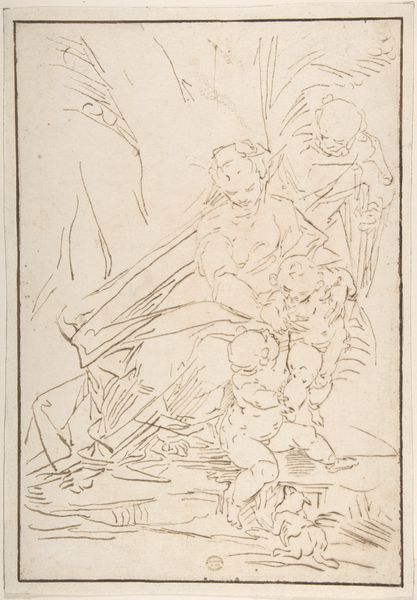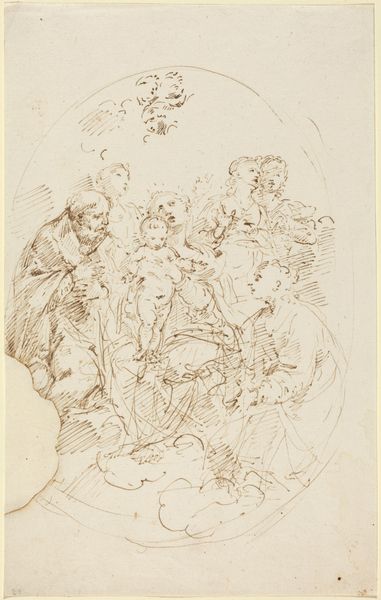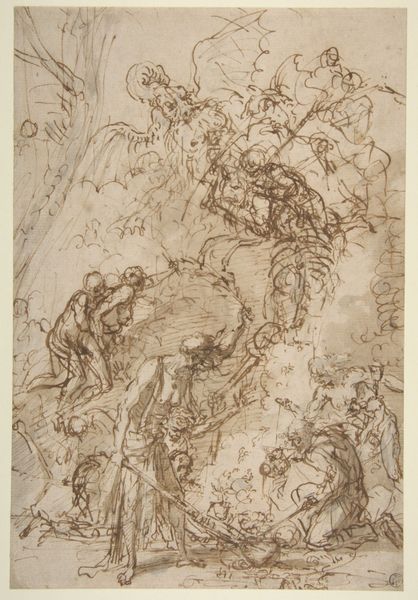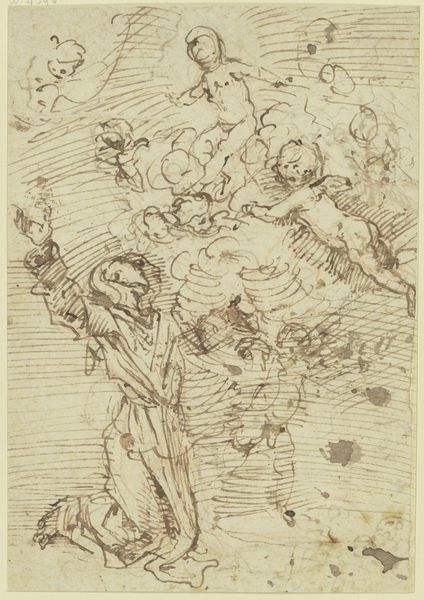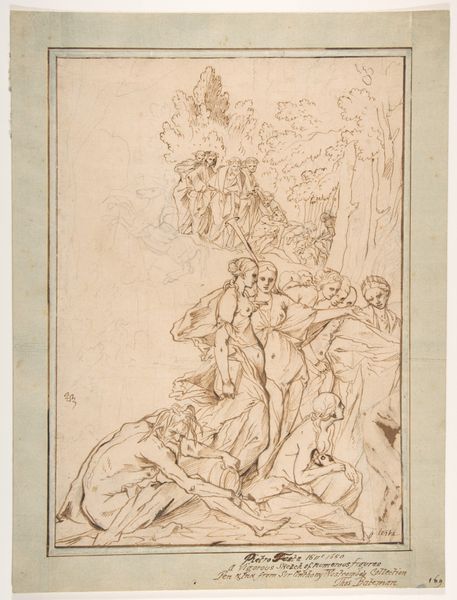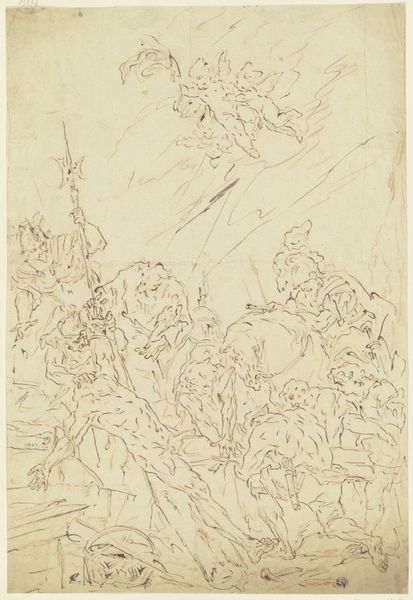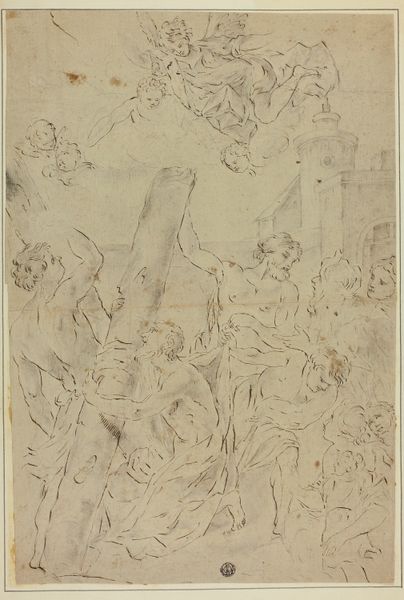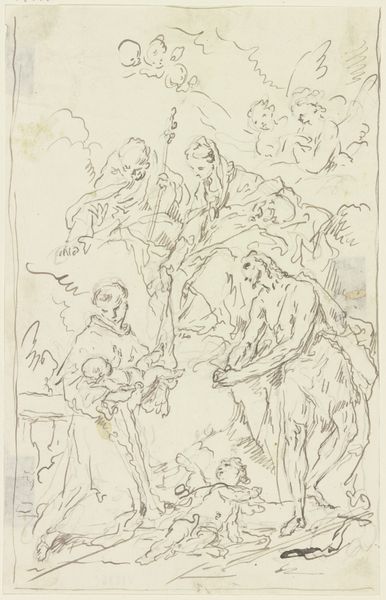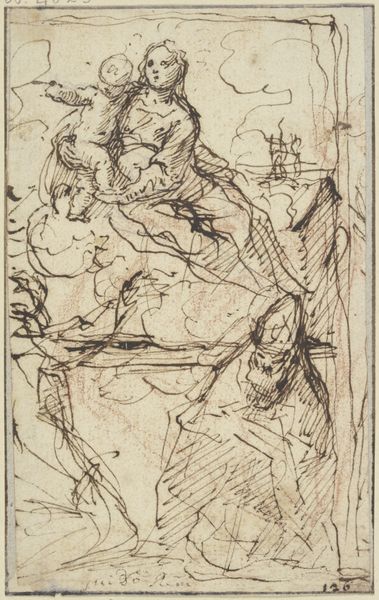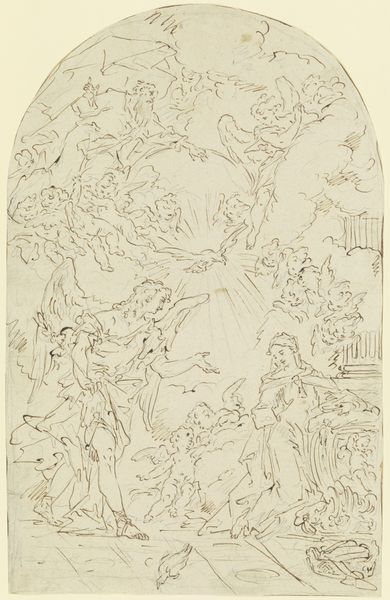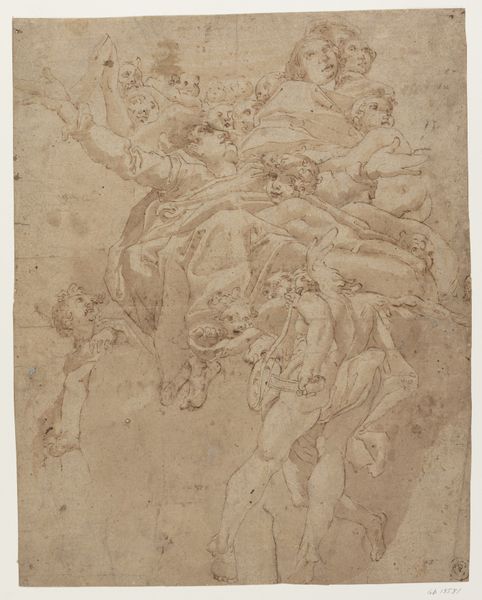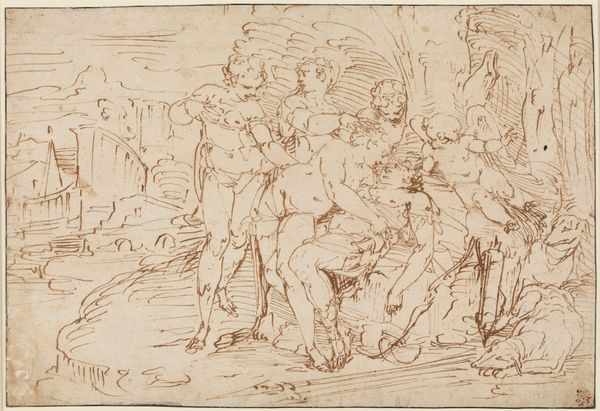
drawing, ink, pen
#
drawing
#
baroque
#
ink painting
#
figuration
#
ink
#
pen
#
history-painting
Dimensions: 16 3/4 × 11 7/16 in. (42.5 × 29 cm) (sheet)29 5/8 × 23 5/8 in. (75.25 × 60.01 cm) (outer frame)
Copyright: Public Domain
Curator: This is Giulio Benso's drawing, "Chastity," created sometime between 1600 and 1630. It's currently held here at the Minneapolis Institute of Art. Editor: It has an almost ghostly quality. Look at how minimal the lines are, yet the scene is clear. You immediately get a sense of lightness, though I suppose "delicate" might be more fitting. It seems fragile to the touch! Curator: The drawing employs a simple medium: pen and brown ink on paper. This was typical for preparatory sketches during the Baroque period, where artists were working out compositional elements for larger paintings or frescoes. Benso was, in fact, known for his fresco cycles. Editor: And "Chastity" as a subject. Why do you think Benso was interested in such subject matter, and how might this particular ink and pen drawing advance or relate to ideas of labor during the Baroque period? The making of art during this period interests me greatly. Curator: Well, representations of virtues were popular at the time, functioning as moral exemplars within both religious and secular contexts. Chastity, as a virtue, symbolized purity, control over desires, and faithfulness. Often in these allegories, figures are accompanied by symbolic objects. For instance, here, there appears to be implements of war, broken beneath the central figure, signifying conquest over vice. Editor: The implements below make me think, were the drawing and ink accessible and widely used for preparatory drawing? To consider this pen and ink drawing for "Chastity," how does its accessibility relate to the period’s approach to allegorical themes, like chastity? Curator: The Baroque period loved its elaborate allegories, offering ways to explore moral, religious, and political themes in dramatic visual form. Benso is clearly operating within that framework here. But let's not lose sight of this artwork as an independent study, its lines vibrating with possibilities. Editor: True, considering the constraints of labor then, and the preciousness of raw material to compose ink from different processes, the economy and efficiency of ink as a vehicle in sketching the allegory in action could give "Chastity" a kind of immediacy! I find the materiality and ease to have affected our interpretation of its allegorical charge! Curator: Ultimately, contemplating "Chastity" draws us into the mindset of the artist. It provides a glimpse into the moral and cultural values of 17th-century Italy, and beyond. Editor: Agreed! It's fascinating how even a seemingly simple ink drawing can open up such complex pathways into art making.
Comments
minneapolisinstituteofart almost 2 years ago
⋮
This striking and strange drawing abstracts the human form to inventive and delightful ends. The bold handling, abbreviated mastery of anatomy, and monumentality of the figures all point to Giulio Benso, a gifted Genoese artist and enthusiastic follower of Luca Cambiaso, whose work is exhibited nearby. The study represents the virtues of chastity, obedience, and poverty. Chastity, on the left, stands upon Cupid, who is lying on the ground, deviously pulling an arrow from his quiver. She holds two of her attributes, a dove and a lily, symbols of her purity. Obedience, seated at the center, grasps the yoke on her shoulder with one hand and balances an open book on her knee with the other. Poverty is shown as a woman lamenting in anguish, leaning against a dead tree.
Join the conversation
Join millions of artists and users on Artera today and experience the ultimate creative platform.
